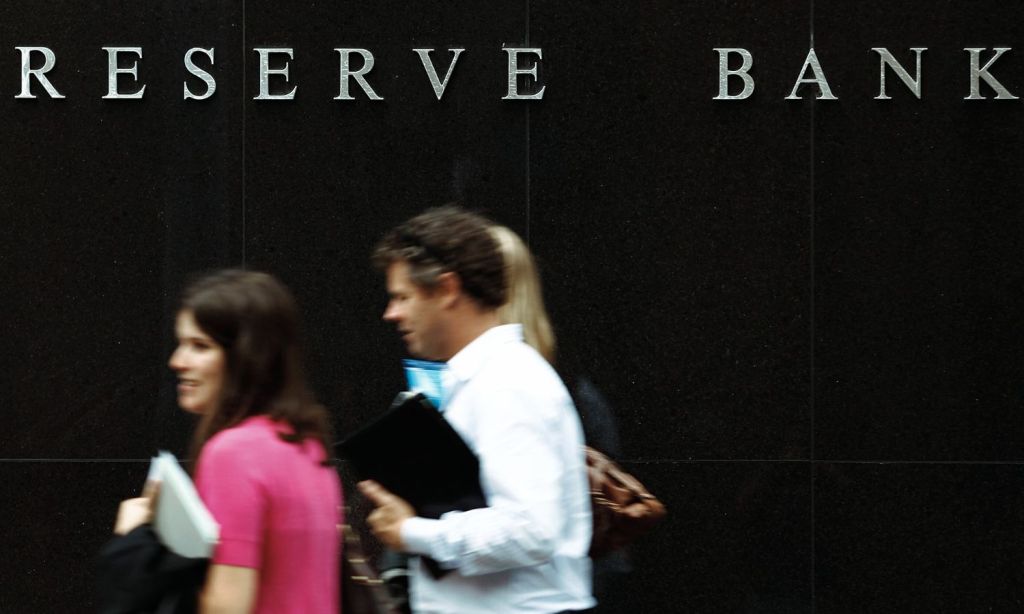The Reserve Bank of Australia has announced that it will not be raising the cash rate again this month.
The decision was made today at the Reserve Bank’s monthly cash rate meeting, where experts were divided over whether they would push the rate up once again.
Just under half of 39 experts polled by the comparison site Finder said that the RBA would not push the cash rate up.
“At its meeting today, the Board decided to leave the cash rate target unchanged at 4.10 per cent,” RBA Governor Phillip Lowe said in a statement.
The cash rate is the rate at which the Reserve Bank lends to commercial banks and is almost always passed on to lenders via interest rate rises on mortgages. The current rate is the highest Australia has seen since 2012.
Following 10 successive cash rate rises in as many months, the RBA took a brief pause in April to assess the impact on inflation.
They then hit the restart button on those raises in May, citing “still too high” inflation of 6.8%, driving the cash rate up by another 25 basis points to 3.85%. A further rise in June saw the cash rate climb to its current 4.1% where it is set to remain.
“The higher interest rates are working to establish a more sustainable balance between supply and demand in the economy and will continue to do so,” Lowe said.
“In light of this and the uncertainty surrounding the economic outlook, the Board decided to hold interest rates steady this month.
However, the RBA have left the door open for more rate rises in the future as they gauge the economic situation.
“This will provide some time to assess the impact of the increase in interest rates to date and the economic outlook,” Lowe said.
The decision will be small comfort for the 1.43 million Australians under mortgage stress. Recent polling by Roy Morgan has shown that the issue is now at its highest level since 2008.
The .25% increase handed down in June means that the average earner is spending a quarter of their post-tax salary on mortgage payments, a 50% increase on pre-pandemic levels.
Roughly two dozen protesters gathered today outside of the RBA’s headquarters in Sydney to protest what they see as an economic strategy that unfairly affects young people.
The RBA has been raising interest rates in a battle to keep inflation down. The latest figures, updated in June, indicate that inflation dropped to 6.3% in March but then increased back to 6.8% in April. However, May saw a sharp drop down to 5.6%. This was a factor in the RBA’s decision.
“Inflation in Australia has passed its peak and the monthly CPI indicator for May showed a further decline,” Lowe said.
However, he added that the RBA will be keeping a close eye on wage increases and the unemployment rate, both drivers of inflation.
“Inflation is still too high and will remain so for some time yet”.
“The Board’s priority is to return inflation to target within a reasonable timeframe”.
The RBA had previously said the April pause had given them time to properly assess the economic situation, which they found to need further tightening. After further consideration this month, they have decided that the global economic outlook may not be the best environment to stress Australia further.
“Some further tightening of monetary policy may be required to ensure that inflation returns to target in a reasonable timeframe, but that will depend upon how the economy and inflation evolve,” Lowe said.
“In making its decisions, the Board will continue to pay close attention to developments in the global economy, trends in household spending, and the forecasts for inflation and the labour market”.

With the cash rate sitting at 4.1%, the average $585,101 mortgage in Australia will have seen repayments rise by $1,320 per month since May of last year.
Even those who locked in the lowest rate available before the hikes, of 1.7%, will now be paying some $3,396 per month.
The increase in the cash rate is designed to put a dent in the spending power of consumers in a bid to curb inflationary pressures. The tactic does seem to have been somewhat working so far, or at least there’s a correlation between the two.
Inflation appears to have peaked in December of last year at 7.8%, dropping to 6.3% in March. While the April increase may have spooked the RBA into action, the May drop could have stayed their hand — for now.
“The Board remains resolute in its determination to return inflation to target and will do what is necessary to achieve that,” Lowe said.
Related: What the Rising Interest Rates Mean For Your Wallet and Your Stress Levels
Related: Rising Interest Rates Could Crush the Housing Market, and Millennials Aren’t Mad About It
Read more stories from The Latch and subscribe to our email newsletter.







